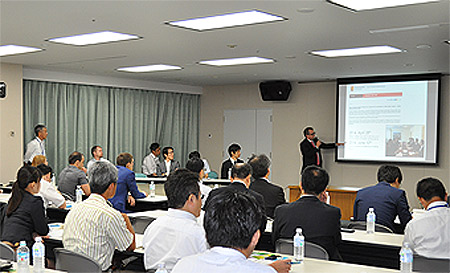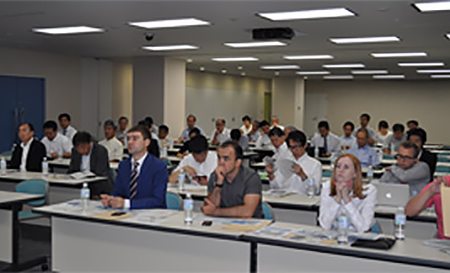Monolitholding with Nikken Sekkei & Nikken Sekkei Research Institute meets the Japan-Russia Urban Environment Council to exchange views about Japanese Smart City Know-How
On Thursday, July 31, 2014, the Japan-Russia Urban Environment Council (the “council”), of which Nikken Sekkei (NS) and Nikken Sekkei Research Institute (“NSRI”) are also members, hosted a meeting between Krasnoyarsk City LLC (“K-City”; President: Petr Golub), an affiliate of Monolitholding, and members of the council with strong interest in smart cities to discuss Japan’s energy-saving technologies and expertise. Twenty-six member groups of the council, a total of 41 participants, attended this meeting held at the Urban Renaissance Agency (“UR”) head office.
◆Japan-Russia Urban Environment Council
The council was established in 2013 in response to calls by Japan’s Ministry of Land, Infrastructure, Transport and Tourism with the objective of further promoting cooperation between Japan and Russia to improve Russia’s urban environment.
As of end July 2014, council members numbered 102 companies and organizations.
◆Monolitholding & Krasnoyarsk City LLC
Monolitholding was established in 1989 as a Russian developer engaged in the principal business of developing residential complexes. It currently conducts business operations in areas including investment, redevelopment, construction, construction materials, and facility management, and has grown into a holding company. The group as a whole has 2,500 employees, and annual sales surpass 10 billion rubles (approx. 28.6 billion yen). Krasnoyarsk City LLC comes under the umbrella of Monolitholding, and is the company operating the Krasnoyarsk City Project.
◆Krasnoyarsk City Project (K-City Project)
The project is a mixed-used development underway in the northern section of Krasnoyarsk City on a 500,000㎡site area, with project costs totaling 1 billion US dollars. This development project plans to build housing ranging from 5-story low-rise to 25-story high-rise apartment buildings, to provide a total of 6,000 units, housing 15,000 residents. In addition, through the aggressive introduction of smart city technologies, the project plans to raise energy efficiency and build high-quality common-use spaces and landscapes that are friendly to the environment.

